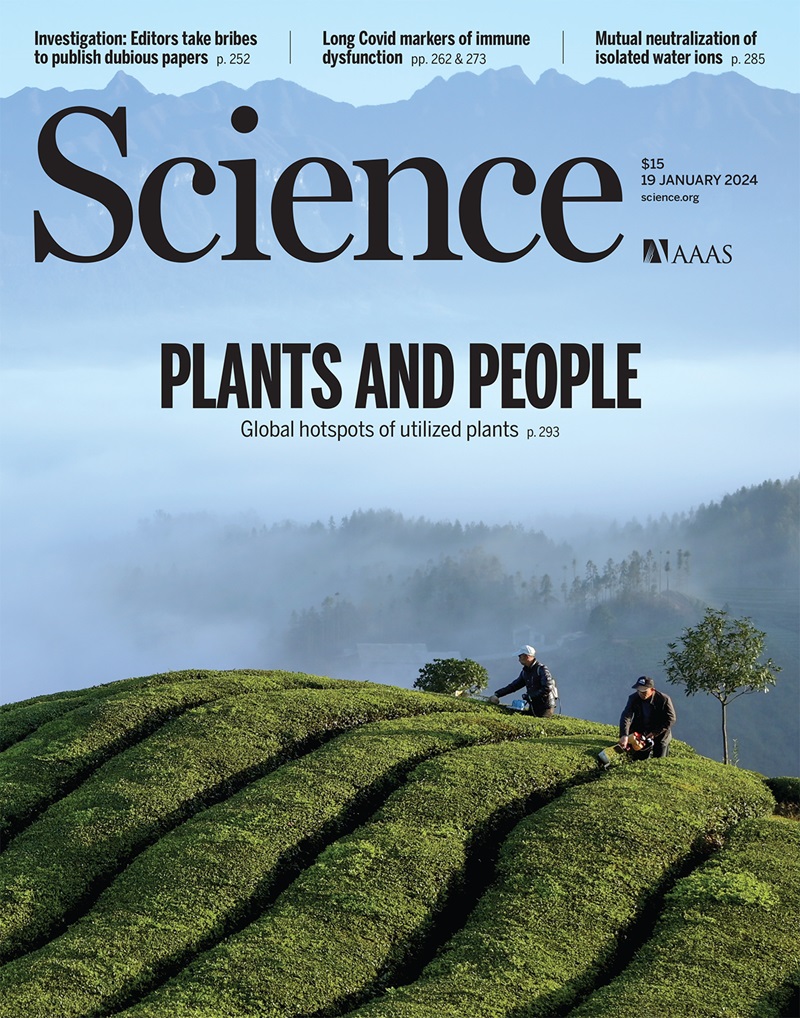3D聚链化建筑材料
IF 45.8
1区 综合性期刊
Q1 MULTIDISCIPLINARY SCIENCES
引用次数: 0
摘要
建筑材料的特性来源于其内部结构元素的几何排列。他们的设计依靠连续的成员网络来控制整体的力学行为。在这项研究中,我们介绍了一类由离散的连接环或笼状颗粒联锁在三维网络中组成的材料,形成聚catenated建筑材料(pam)。我们提出了一个通用的设计框架,将任意晶体网络转化为粒子连接和几何形状。在响应小的外部载荷时,pam表现得像非牛顿流体,表现出剪切变薄和剪切增厚的响应,这可以通过它们的阳离子拓扑结构来控制。在较大的应变下,pam表现为晶格和泡沫,具有非线性应力-应变关系。在微观尺度上,我们证明了pam可以改变其形状以响应施加的静电荷。pam的独特特性为开发刺激响应材料、能量吸收系统和变形结构铺平了道路。本文章由计算机程序翻译,如有差异,请以英文原文为准。
3D polycatenated architected materials
Architected materials derive their properties from the geometric arrangement of their internal structural elements. Their designs rely on continuous networks of members to control the global mechanical behavior of the bulk. In this study, we introduce a class of materials that consist of discrete concatenated rings or cage particles interlocked in three-dimensional networks, forming polycatenated architected materials (PAMs). We propose a general design framework that translates arbitrary crystalline networks into particle concatenations and geometries. In response to small external loads, PAMs behave like non-Newtonian fluids, showing both shear-thinning and shear-thickening responses, which can be controlled by their catenation topologies. At larger strains, PAMs behave like lattices and foams, with a nonlinear stress-strain relation. At microscale, we demonstrate that PAMs can change their shapes in response to applied electrostatic charges. The distinctive properties of PAMs pave the path for developing stimuli-responsive materials, energy-absorbing systems, and morphing architectures.
求助全文
通过发布文献求助,成功后即可免费获取论文全文。
去求助
来源期刊

Science
综合性期刊-综合性期刊
CiteScore
61.10
自引率
0.90%
发文量
0
审稿时长
2.1 months
期刊介绍:
Science is a leading outlet for scientific news, commentary, and cutting-edge research. Through its print and online incarnations, Science reaches an estimated worldwide readership of more than one million. Science’s authorship is global too, and its articles consistently rank among the world's most cited research.
Science serves as a forum for discussion of important issues related to the advancement of science by publishing material on which a consensus has been reached as well as including the presentation of minority or conflicting points of view. Accordingly, all articles published in Science—including editorials, news and comment, and book reviews—are signed and reflect the individual views of the authors and not official points of view adopted by AAAS or the institutions with which the authors are affiliated.
Science seeks to publish those papers that are most influential in their fields or across fields and that will significantly advance scientific understanding. Selected papers should present novel and broadly important data, syntheses, or concepts. They should merit recognition by the wider scientific community and general public provided by publication in Science, beyond that provided by specialty journals. Science welcomes submissions from all fields of science and from any source. The editors are committed to the prompt evaluation and publication of submitted papers while upholding high standards that support reproducibility of published research. Science is published weekly; selected papers are published online ahead of print.
 求助内容:
求助内容: 应助结果提醒方式:
应助结果提醒方式:


